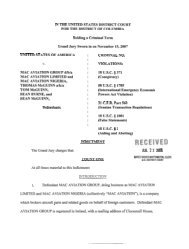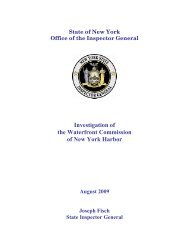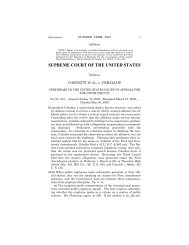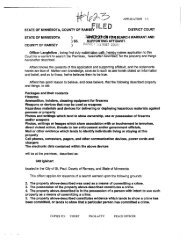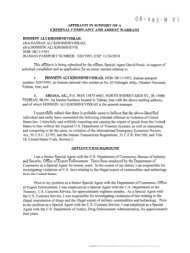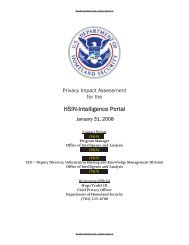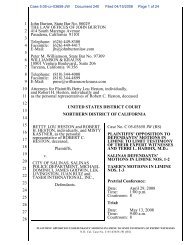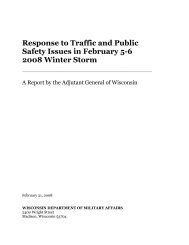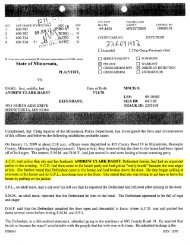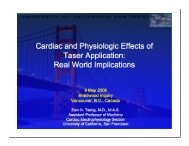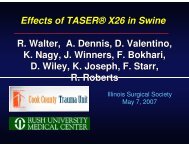TASER Electronic Control Devices Review Of Safety Literature
TASER Electronic Control Devices Review Of Safety Literature
TASER Electronic Control Devices Review Of Safety Literature
Create successful ePaper yourself
Turn your PDF publications into a flip-book with our unique Google optimized e-Paper software.
4. The patient loses consciousness within 5-15 seconds.<br />
5. A sufficiently strong defibrillation shock—either internal or external—<br />
restores a cardiac sinus rhythm 99.9% of the time. 25<br />
6. There is no increased risk of a later VF since electrical current does not<br />
linger, or build up, in the body as a poison or drug might.<br />
These scientific findings sometimes appear to be appreciated by only a few media<br />
reporters. The majority of medical examiners do understand these facts as<br />
can be seen from the increasing sophistication of autopsies in media misreported<br />
cases.<br />
2.2 No Single <strong>TASER</strong> ECD Pulse Can Induce VF<br />
The <strong>TASER</strong> ECD cannot induce VF. 27 The battery powered hand-held <strong>TASER</strong><br />
ECD has very brief duration high currents and just like a strong static electricity<br />
shock, the very brief electrical pulses are significantly too short in duration and<br />
low in net current to affect the heart as described above.<br />
Different Duration Definitions<br />
The term “duration” is used in the study of electrophysiology with 2 very different<br />
scales.<br />
1. Pulse duration. This is the width of an individual electrical pulse and is<br />
typically 1 ms or even far less. For example the pulse duration of an X26<br />
ECD is about 0.1 ms or 100 µs. This duration is on the scale that a nerve<br />
cell requires to be stimulated.<br />
2. Shock or application duration. This refers to the total length of time that an<br />
electrical current is applied on the order of time that a human could estimate<br />
it. This is typically 1 second or more. For example, the programmed<br />
X26 application duration is 5 seconds. During that time it will deliver 95 (=<br />
19 pps x 5 seconds) of the short duration pulses.<br />
Cardiac Rhythm <strong>Safety</strong> Margin Calculations<br />
As of July 2008, <strong>TASER</strong> devices were used in over 750,000 voluntary training<br />
exposures and 600,000 field uses (total of about 1.4 million human uses). There<br />
is no credible evidence of a resulting cardiac arrhythmia as there have been no<br />
well-documented cases of onset of VF within 10 seconds of the application. 28<br />
The safety margin of the <strong>TASER</strong> device outputs can be quantified by comparing<br />
them to published scientific data on the electrical induction of VF (the main cause<br />
of cardiac arrest).<br />
26




